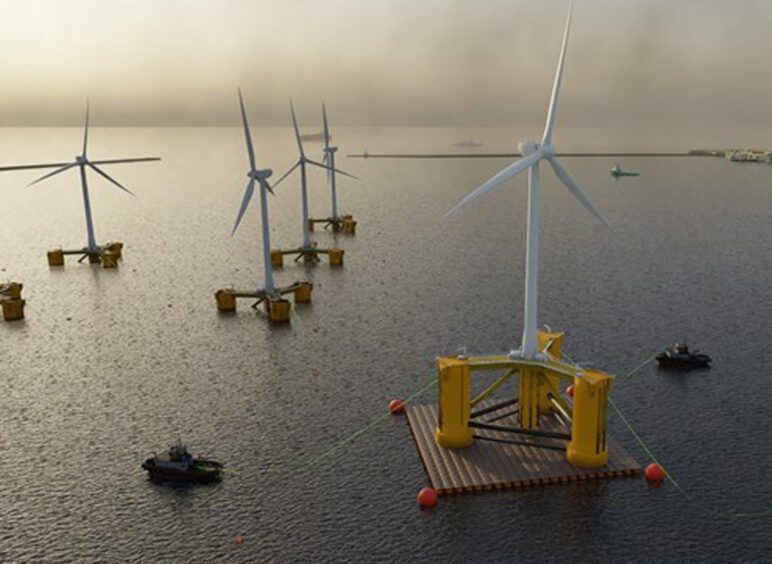
Japan has enormous potential to become a global leader in floating wind if the government can develop a coherent strategic plan for the sector, delegates at the Japan Wind Energy 2022 conference heard in Tokyo on Thursday. But rapid action is needed to attract investment in an increasingly competitive global offshore wind market.
Japan’s floating offshore wind potential, at 424 GW, is more than three times its fixed-bottom potential. This is where the bulk of the nation’s wind resources lie, said the Global Wind Energy Council (GWEC) in its latest report.
Indeed, Japan has huge potential for offshore wind development, but the opportunity for bottom-fixed wind will be constrained by available water depth. This will eventually open the market for the development of floating offshore wind systems. However, the technology for floating offshore wind has yet to be developed on a commercial scale globally. This offers Japan a unique opportunity.
Joe Nai, general manager offshore power Asia Pacific at Shell (LON:SHEL), told delegates at the Japan Wind Energy 2022 conference in Tokyo 11-12 October, that the “potential is tremendous.”
Echoing Nai’s comments, Clement Helbig de Balzac, chief development officer, Japan, at Copenhagen Offshore Partners, sees Japan as a 100GW market by 2050, most of which will be floating, he predicted. “Japan can be the largest floating market in the world.”
However, there is a lack of clear and ambitious targets, while a robust plan to deliver on the current goals is also missing, added Balzac.
Japan is aiming to deploy 10 gigawatts (GW) of offshore wind capacity by 2030 and between 30 and 45 GW by 2040. Its first commercial offshore wind farm Akita Noshiro with 140MW capacity will start operating later this year after all 33 turbines were successfully installed last month.
Balzac also noted that Japan has yet to implement a legal framework to explore the floating wind potential of the country’s exclusive economic zone (EEZ) – the seventh largest in the world. The government also needs to design an auction system for floating wind in the EEZ.
Still, Jutta Dissen, senior vice president of RWE Renewables, sees floating offshore wind offering more opportunities than risks for Japan if the country starts its development sooner rather than later. The frameworks and technology are already available to be adapted from Europe and the US, she said.
Matthias Bausenwein, senior vice president, offshore wind at bp (LON:BP), agreed that Japan is a key long-term market for floating wind, but that the government must first reach some consistency with fixed-bottom auctions.
Lars Johannes Nordil, vice president business development Asia at Equinor (OSLO:EQNR), believes it is important for Japan to open acreage in the country’s exclusive economic zone (EEZ) for floating offshore wind. Further away from shore there is better wind resource and less conflicts with stakeholders, he said. “Floating offshore wind potential in Japan waters is very large and they should take advantage.”
Significantly, there is a social pushback against nearshore wind, so the industry is expected to move further offshore, and everyone feels floating wind is the future, noted Luke Eginton, Japan country representative of Mainstream Renewable Power.
Masayuki Sugiyama, general manager for wind power energy business at Mitsui o.s.k. lines, said that Japan has the knowhow in shipbuilding to compete technically in the floating offshore wind space if the government can encourage the sector.
Indeed, industry observers believe Japan can bring innovation to existing floating wind concepts and industrialise the technology. This should help bring costs down and it could start a whole new revolution in floating systems.
Moreover, the Asian floating offshore wind farm market is getting traction with European oil and gas companies due to the potential synergy with offshore engineering technology, combined with existing marine and shipping infrastructure. Now they just need to see strong government support in the region.
Energy research firm Wood Mackenzie estimates investment opportunities for offshore floating wind could be worth as much as $58 billion in Asia Pacific.
Ultimately, for now, Japan is lacking a holistic and centralised approach to develop the offshore wind sector. Crucially, the government needs to step up its game, and fast, if it is to meet decarbonisation targets, boost energy security, as well as compete for global wind investment. Developers, particularly the major Japanese companies that have more clout than their foreign peers, such as Sumitomo Corporation, also need to improve collaboration to better engage the government in building the industry.
Recommended for you

